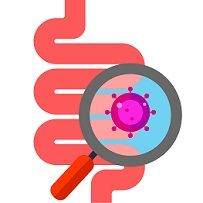Researchers Enlist Cattle Dewormers in Fight Against C. difficile Infections
“It definitely gave me an incentive,†says Kim D. Janda of his experience with Clostridium difficile (C. difficile) and its influence on his current work to find better treatments for the common and sometimes fatal intestinal infection.

“It definitely gave me an incentive,” says Kim D. Janda of his experience with Clostridium difficile (C. difficile) and its influence on his current work to find better treatments for the common and sometimes fatal intestinal infection.
The infection results from a bacterial imbalance in the intestines, usually brought on by prolonged antibiotic treatment. It’s often contracted in hospitals. Hundreds of thousands of Americans fight it every year, and it killed as many as 30,000 in 2011, when the CDC last released an estimate.
Janda is the Director of the Worm Institute for Research and Medicine of the Scripps Research Institute. He, along with his research associate Major Gooyit, have authored a new study that finds a novel, existing class of drugs to be effective against C. difficile: salicylanilides.
Salicylanilides have long been used to deworm sheep, goats, and cattle. Janda says they have “all the right features” for fighting C. difficile infections. They are good at killing the bacteria and, when administered orally, mostly remain in the gut rather than absorbing into the bloodstream, which allows them to fight the infection onsite.
The study, entitled “Reprofiled anthelmintics abate hypervirulent stationary-phase Clostridium difficile”, was published last week in Scientific Reports.
Existing treatments, like older antibiotics metronidazole and vancomycin and their similar new counterpart fidaxomicin, while effective, still leave a significant portion of patients exposed to recurrence of the infection. Despite fidaxomicin treatment, the most “hypervirulent” strain of the bacterium, BI/NAP1/027, is resurgent in as many as 25% of people.
Four different salicylanilides were tested against C. difficile strains in laboratory dishes, alongside metronidazole and vancomycin.
“We found that these salicylanilides inhibited the growth of a broad selection of strains, including the BI/NAP1/027 strain, with similar and sometimes greater in vitro activity than metronidazole’s and vancomycin’s,” Gooyit says in a corresponding press release from the Scripps Research Institute.
Against stationary-phase cells of the bacteria, the salicylanilides outperformed their competition. Stationary-phase C. difficile produce the protein toxins that can damage the intestines, as well as the tough, long-surviving “seeds” by which the infection can be spread. The older antibiotics merely inhibited growth to a certain point, whereas the salicylanilides were able to kill these important cells.
The compounds are believed to work by disrupting the electrical processes of bacterial cell membranes, hindering the processes that allow those cells to survive and proliferate.
Three of the four salicylanilides, rafoxanide, oxyclozanide, and closantel, are not FDA-approved for treatment of humans, but are approved for veterinary use; the fourth, niclosamide, is approved for use against tapeworm infections in humans.
The testing has now moved from lab dishes up to animal models of C. difficile infections. The researchers are seeking to license their effective salicylanilide compounds to a pharmaceutical company for further development as a treatment.
Related Coverage:
Deploying Bacteriophages Against Clostridium Difficile Infections
Researchers Work to Develop a Nonantibiotic Treatment for Clostridium difficile
Latest News and Updates on C. Difficile Infection Management and Treatment